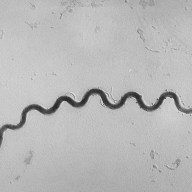In groundbreaking research, Canadian scientists have for the first time tracked the flight paths of migrating songbirds by fitting them with tiny geolocators carried in miniature backpacks.
“Never before has anyone been able to track songbirds for their entire migratory trip,” said lead investigator Bridget Stutchbury, a professor of biology at York University.
“One aspect of the research is looking at this miracle of migration and how these little birds are able to make these long trips,” Stutchbury said. “And these geolocators allow us for the first time to do a start-to-finish map.”
Songbirds fly thousands of kilometres to and from their breeding and wintering grounds during the annual migration. But existing technologies like radio-frequency or satellite-tracking weren’t suitable for tracking birds small enough to fit in the palm of a hand.
Stutchbury’s team worked with the British Antarctic Survey to design a miniaturized geolocator — weighing less than a dime — that could be easily carried on the backs of songbirds in order to chart their migration routes and wintering destinations.
The research began in summer 2007, when the team captured 14 wood thrushes and 20 purple martins at their breeding grounds in Pennsylvania, then strapped on the geolocators before the birds took wing for Central and South America.
The devices are mounted on the birds’ backs by looping thin straps around their legs. The geolocator rests at the base of the bird’s spine to avoid interfering with its balance.
The data showed songbirds can fly more than 500 kilometres in a single day, far more than the 150 kilometres per day that previous studies had estimated.
















